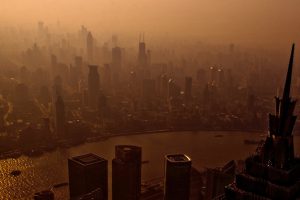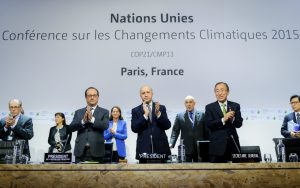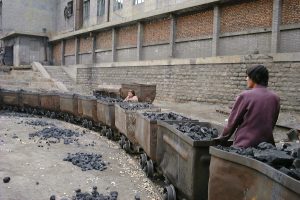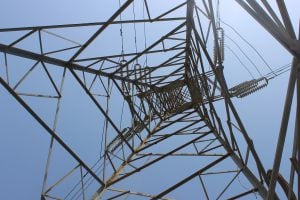China’s new Air Pollution Prevention and Control Law—also called the New Air Law—will come into full effect starting January 1. The Law was revised and passed by the National People’s Congress in the summer, and is the powerful document to address air quality in 15 years.
The New Air Law shifts how China prioritises air quality management, requiring cities to regularly release and submit definitive plans to ensure they are on track to meet national air quality targets. This is also the first Chinese law to mention controlling greenhouse gases (GHGs), addressing sources from coal, vehicles, marine vessels and agricultural machinery, as well as from construction and food industries. Enforcement systems are strengthened—and more critically, democratised—with raised standards for public data disclosure and protection measures for public participants.
After translating the entire law into English, the Clean Air Alliance of China, a platform for international think-tanks, worked with the Energy Foundation to highlight some important changes that can be seen starting on January 1.
Accountability
Local governments will be held accountable to make concrete plans to meet air quality targets and execute them accordingly. The New Law requires cities that fail to meet air quality standards to submit and publish detailed, explicit plans to achieve air quality targets.
The planning process shall be open and transparent, allowing public input. In addition to submitting final plans, these cities will also regularly publicise and submit any updates on development and implementation efforts to their supervising government agencies and the public.
If air quality targets are not met after a certain period, local government leaders will be asked to explain and develop correction plans, and new projects in the city will be prohibited from undergoing required Environmental Impact Assessments. These air quality planning requirements are partly based on the State Implementation Plan (SIP) in the US and the Local Air Quality Management (LAQM) in the UK, which were proven to be effective mechanisms to control air pollution.
Principles and priorities
For the first time, controlling greenhouse gas emissions is mentioned as a principle—and priority—in a Chinese law.
The New Air Law cuts GHGs by introducing several measures to control coal use and transportation emissions.
The law calls for changing energy structures to reduce the percentage of coal as a primary energy source in China. The law requires all new coal plants to have on-site washing equipment to remove sulphur and ash content, and older coal plants are to be retrofitted to meet environmental standards. Stricter enforcement measures to meet coal quality standards are introduced, so reducing China’s overall amount of usable coal, improving energy efficiency and cutting pollutant emissions.
In addition to introducing stricter enforcement standards for coal operations, the New Air Law enables regional governments to establish zones that prohibit burning fuels that emit a large amount of pollutants. In those areas, any entity that constructs or expands facilities that use high-pollution fuels can be fined up to 200,000 yuan (US$30,000). In most cases, these high-polluting fuel restriction zones will become coal-free.
Major air pollution control regions are required to limit the increase of local coal consumption, where any new projects that use coal must offset the amount in the same region, thereby setting a coal cap. The Law also requires green dispatch of electricity to prioritise the renewable and cleaner energy dispatch over dirty power generators. This provides legal foundation for green dispatch program as stated in the recent Xi-Obama joint announcement on climate change.
The New Law pushes for vehicle fuel quality improvements, enabling advanced emission standards to control PM emissions and black carbon from diesel vehicles and equipment. The Law also encourages more public transportation use, non-motorised transport, and new energy vehicles. While the law does not require “low emission zones” for vehicles, it has established “low emission zones” where off-road diesel equipment being used in the area must meet a certain level of emission requirements.
Role of the public
The New Air Law recognises public participation as a crucial part of environmental protection. To encourage the public to contribute to enforcement efforts, the New Air Law requires regional governments to protect the confidentiality anyone who reports of illegal polluting acts, investigate these cases, and if the claims are correct, reward the reporter of the incident.
Major emitting entities are required to install automated monitoring equipment and openly publish emission data—anyone who tampers with them will result in fines of up to RMB 200,000. Moreover, for the first time, polluting entities are required to keep historical monitoring data and digitally connect automated monitoring machines to local environmental protection departments. This allocates more power to national and local governments to regulate emissions and manage monitoring systems, enabling them to use on-site investigations and remote surveillance. Severe pollution cases can also result in seizures and detainment of equipment and facilities.
Compared to its predecessor, the New Air Pollution Prevention and Control Law was expanded from seven chapters 66 clauses to eight chapters 129 clauses. With increased thoroughness and concrete clauses in China’s New Air Law, we look forward to entering 2016 with a more comprehensive, enforceable regulatory system to push for cleaner air.








